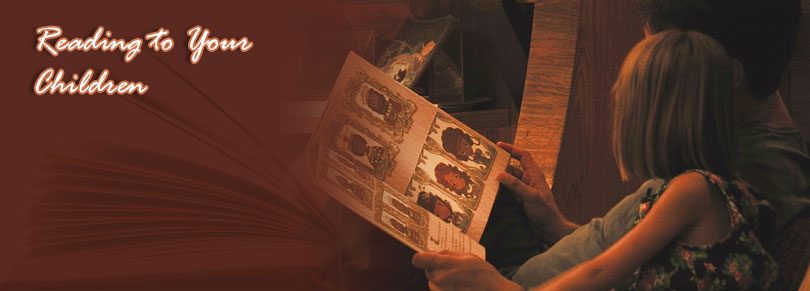As a fifteen year old, I remember hitching a ride on a friend’s bicycle one afternoon. The dark green canopy of trees along the way enveloped me with a sense of peace and calm. As Deepa (name changed) pedaled along, I was eager to discuss the latest book I was reading. Deepa was unusually silent, and I asked her why she didn’t seem to share my enthusiasm. She replied that books did not excite her too much.
I was a bit taken aback to hear this, since I was raised in a family of book lovers. Cartons crammed with books, mostly second-hand, were periodically brought into our home and hungrily devoured by three book-hungry nestlings. My two sisters and I were usually found curled up, buried in the dog-eared pages of a favorite book. Fostering a love for books is a powerful yet inexpensive tool you can use to empower your child, and satisfy his/her strong and inherent desire to learn.
Here are three ways to help your child develop a passion for books.
1. Read to your child
When you read to your child, you are in some magical way connecting the world of reality to the world of fantasy. Stories can fuse these two worlds and make the difficult parts of childhood a little easier to bear. Imagine a situation where a toddler has just begun pre-school. It is a painful separation from all that is secure and familiar. How does a parent deal with this period of transition?
You can always read a comforting story to your child. A lady I know sat down with her four year old, and read aloud a book by Eleanor Hudson called “The Care Bears Help Out”. It is the story of a boy called Peter who had just moved into a new house and a new neighborhood. Peter was feeling very low and special bears called ‘Care Bears’ help him overcome feelings of loneliness and unhappiness. They know exactly how to make Peter feel better.
After his mother finished the story, the little boy seemed to be in a better state to handle this period of change. This is because stories exercise a child’s imagination. This four year old was identifying with Peter, and seemed to have found a way of coping with the situation.
2. Exchange the TV unit for a big book- shelf
Right in the middle of our living room stands a big brown book-shelf. The shelves are filled with a handpicked collection of wholesome books acquired over the years. It is not unusual to find the four of us seated at the dining table poring over a book or two. Books have evolved into our primary source of entertainment, especially since our television was packed away two years ago.
Karen Santorum, author of “Everyday Graces: A Child’s Book of Good Manners” says …. “We have read thousands of stories to our kids. Good things happen when your child is sitting on your lap. It lends itself to emotional and physical bonding”
3. Re-telling and re-reading stories
Children enjoy listening to stories over and over again. As a story is read and re-read, certain phrases and words linger on in a child’s mind. These words float and simmer in their little minds as the story is repeated time and again, until the meaning finds its way into their hearts. Gradually the child begins to use this newly acquired vocabulary in real life.
This builds self- assurance in handling language and a child is thus able to express thoughts more effectively. We witnessed this process at close quarters in our family. Our daughter did not go to a formal school for the first six years of her life, but we have read hundreds of stories to her over and over again. This repetitive reading enabled her to match the words that she heard with the words in print.
Record a story
This is a helpful tip for parents unable to devote sufficient time each day for reading to their children. John Holt, one of UK’s leading educational and social critics in his book “How Children Learn” has an innovative solution. He suggests that parents read a story aloud and record it on a tape-recorder. It is very helpful if children can follow the story with their eyes, while they listen to a parent’s recorded voice.
To conclude, this powerful urge to learn and understand their world is inside every child; in your child too. Some of you, like my old school buddy, may not be book-lovers. Yet you can turn your child into one. Read to him/her! As a T-shirt slogan I once saw says “Change a childhood. You might just change the world!”






Leave a Comment